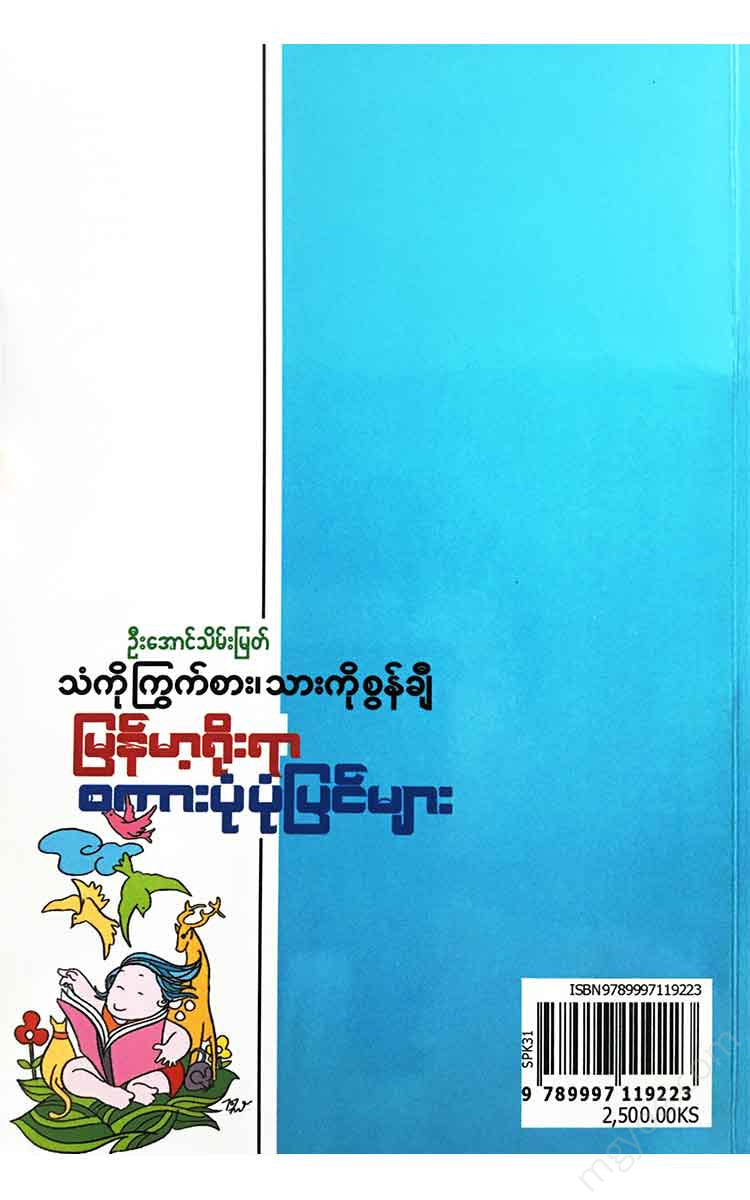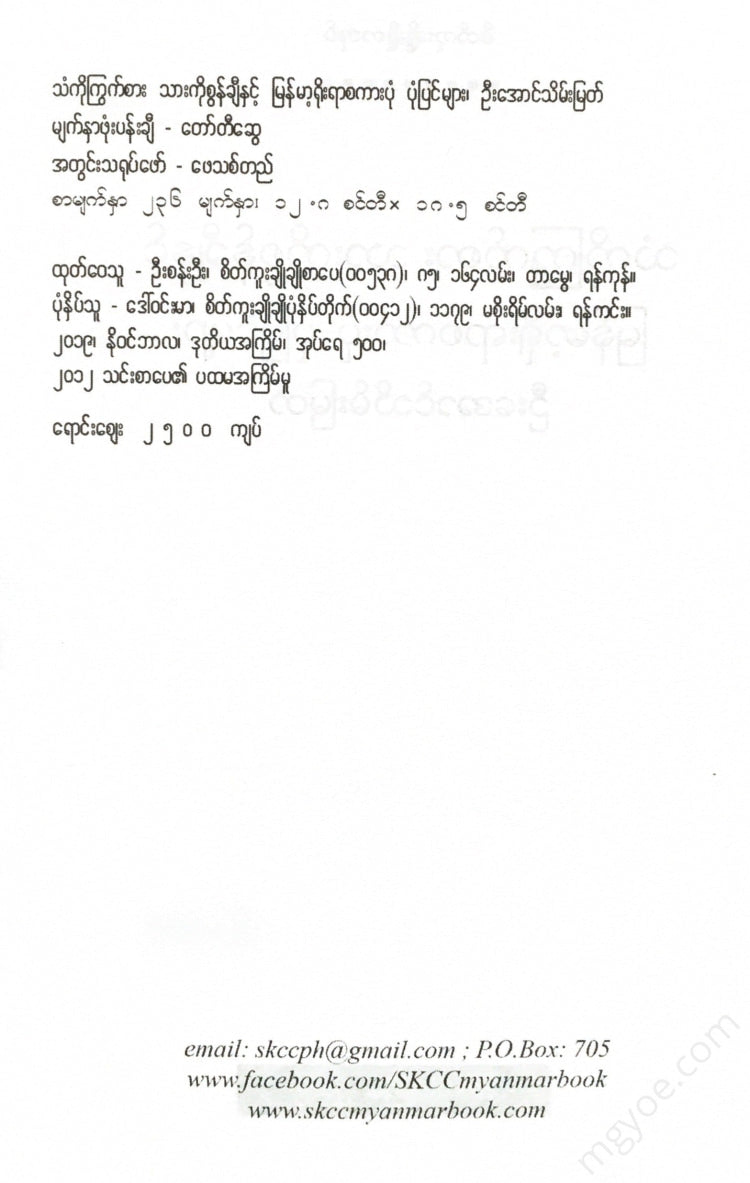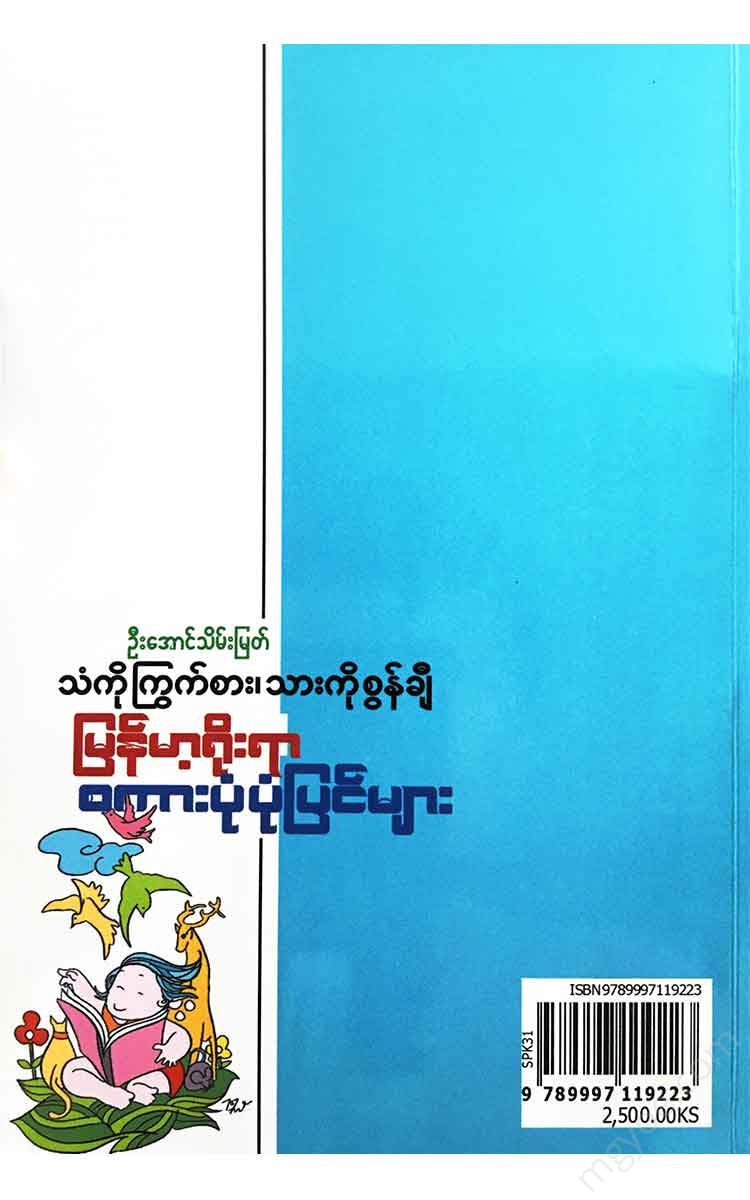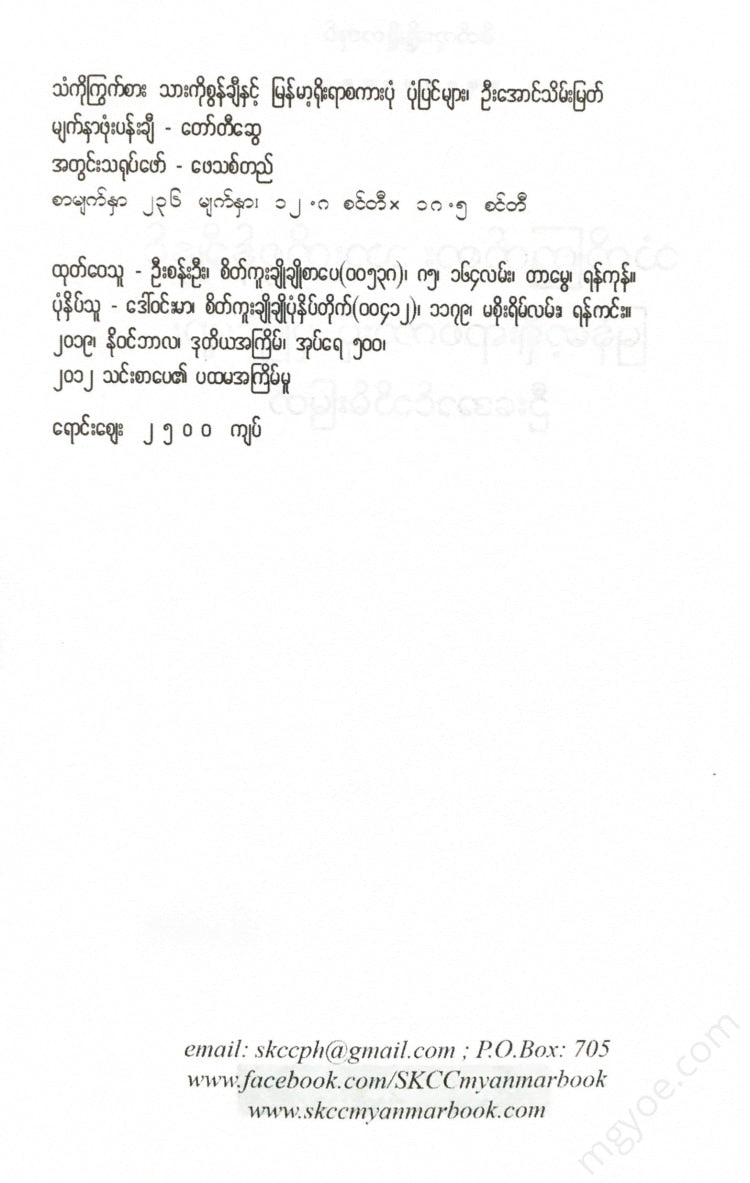စိတ်ကူးချိုချိုစာပေ
U Aung Thein Myat - The Rat Eats the Iron and the Meat Eats the Lamb and the Goat and Burmese Traditional Proverbs and Stories
U Aung Thein Myat - The Rat Eats the Iron and the Meat Eats the Lamb and the Goat and Burmese Traditional Proverbs and Stories
Couldn't load pickup availability
First letter
A proverb is a saying or expression that is filled with meaning and is often used as a metaphor by many people.
A story is a narrative written with imagination and imagination, with a purpose in mind.
Therefore, when compiling "proverb stories," we must look for stories that are full of meaning and that fit the standard expressions that people often use.
In the book of Puttavarvadā,
Talkative, talkative, talkative
Speak, speak, speak
Talkative, talkative, talkative
Talk, talk, talk.
Talkativeness, conversationalism, gossip
Interchange, exchange, exchange
Words, words, words
Easy to talk, easy to talk, easy to talk
Word, word, word?
Talkative, talkative, talkative
Speaking, slurring, slurring words
Interjection, riddle, riddle
Talkative, talkative, talkative
Pressing words, slurring words, saying things
Catchphrase, catchphrase, catchphrase
Mixed words, mixed words, mixed words
Conversation, conversation, conversation
Just words, words, words
Talk, ask questions, talk loudly,
Talk, talk, talk
Speak, speak, speak.
Long-winded, long-winded, eloquent
Short, eloquent, eloquent
Speechless, beautiful, speechless
Talk, talk, talk.
It describes 79 types of words: "Sak-an-tham", "Sak-luk-tham", "Sak-nai", and "Sak-pai".
Among these, we must find and extract proverbs that are stories. However, although there are proverbs, there are no appropriate stories.
Among them, there are still mixed "phrases" and "proverbs" that have slippery meanings. In a way, it is "biting the cheek and biting the ear."
Those who interpret this saying say, "If he bites your cheek, you bite his ear in return."
In fact, if you have a toothache and pain around your cheek, it's because your ears are also hurting. The people who hold the cowbells will say, "That's another story."
Although there are over two thousand proverbs, they are just a mixture of slogans and warnings. In form, the effort is the Buddha. Under the feet of a mountain.
Again, foreign idioms such as "time and tide wait for no man" are also seen as being incorporated into Burmese language.
In the proverbial love letter of the great sage,
"It is true that a sibling is close, but it is difficult to give,
"Persistently holding on to the truth... has brought you good fortune."
"The great judge is the one who judges fairly and consistently."
"You get friends by giving, and you get respect by being important."
"A good beginning is sure to bring good luck."
"Beautiful in appearance, but wicked in character."
"It is obvious, not a word,
The work is good, but the company is not complete.
"He has a reputation, but he doesn't know how to do it," and
"There is a mark, but it is not necessary."
"Good beginning, good end,
"He is being oppressive, unjust,
I know the plan, Ma Khin Yin.
"They say, 'They're just doing it.'" is also common, but it's mostly just proverbs and advice.
Similarly, in the story of Paukkan Maung Cho,
"Like a spittle thrown away when it is someone else's property, like a knife held in the hand of a murderer in his desire to control his wife," etc.
"What is not seen is a physician, what is not heard is a judge,
"A prince is not to be consulted, a prince is not to be consulted, a prince is not to be consulted,
"Whatever is not allowed is a woman's wife, whatever does not come and go is a pure spirit," etc. are also mentioned, but the majority are just proverbs. Therefore, there are not as many proverbs that can be used to describe the story as you might think. Maung Pale and Maung Nam Pa are very fond of each other, so the saying "Pale Nam Pa should be" is also considered to be very appealing.
In compiling Burmese traditional proverbs, the 550 Nipa Taws were avoided because we wanted to only reveal traditional stories.
Now, in the 'Proverbs', there is no escaping it. In terms of form, they are "Mara Rasaka Chai" and "Sulalee Ye Te Hlutta Hore". They are from the Maha Sutta Soma Jatka and the Maha Nipatwin Buridat Jatka.
Therefore, I have mentioned this to remind you that not every proverb has a story, not every story has a proverb, and not every rhymed verse is a proverb.
U Aung Thein Myat











